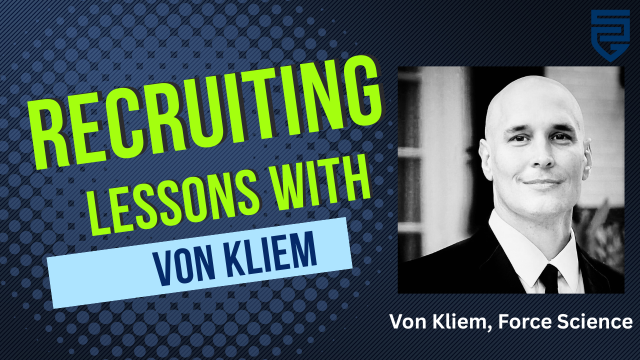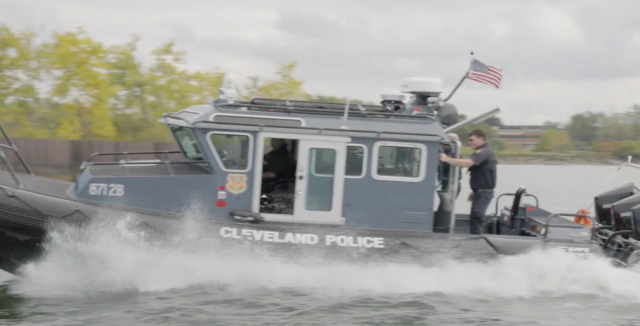Recruiting for law enforcement agencies has become increasingly challenging in recent years. The landscape is evolving, and agencies must adapt their strategies to attract and retain qualified candidates. In this article, we will explore the nuances of recruiting in law enforcement, the role of video in recruitment, and the importance of effective communication throughout the hiring process.
The Current State of Law Enforcement Recruiting
Many law enforcement agencies are facing a decision crisis rather than a recruiting crisis. This distinction is crucial because it reflects the need for agencies to reassess their recruiting strategies. The current environment demands a more focused approach to attract the right candidates.
As agencies grapple with staffing shortages, they must recognize that a simple influx of applicants is not enough. The quality of candidates and the effectiveness of the recruiting process are paramount. It’s essential to understand the dynamics of the modern job seeker and what they expect from law enforcement careers.
Understanding the Modern Candidate
Today’s candidates are often digital natives, accustomed to consuming content through platforms like TikTok and Instagram. They are less impressed by traditional marketing methods, such as flashy recruitment videos, and more interested in authentic representations of agency culture and values. This shift necessitates a reevaluation of how agencies present themselves to potential recruits.
The Role of Video in Recruitment
Video has become a popular tool for law enforcement agencies looking to attract candidates. However, it’s essential to use video effectively within the recruiting strategy. While recruitment videos can enhance an agency’s branding, they should not be the primary method for generating candidate interest.
Agencies often invest significant resources into producing high-quality recruitment videos, but the return on investment may not be as substantial as anticipated. Many departments find that despite spending tens of thousands of dollars on video production, they do not see a corresponding increase in qualified applicants.
Leveraging Video at the Right Stage
Instead of leading with video, agencies should use these resources to supplement their recruiting efforts once candidates have expressed interest. Videos can effectively showcase the culture and values of the department, helping to engage candidates who are already in the recruitment pipeline.
For example, once a candidate has applied or shown interest in the department, videos can be used to educate them about the hiring process, what to expect during training, and the various specialties available within the agency. This approach ensures that videos serve a supportive role rather than being the primary driver of candidate interest.
Prioritizing Effective Communication
One of the most significant challenges in law enforcement recruiting is maintaining effective communication with candidates. Many agencies have outdated processes that lead to long response times and a lack of clarity regarding the next steps in the hiring process.
To keep candidates engaged, agencies must establish a robust communication strategy. This strategy should include regular updates throughout the recruitment process, answering any questions candidates may have, and providing clear instructions on how to proceed. SAFEGUARD Recruiting has pioneered this communication strategy through their Applicant Tracking System.
Improving Candidate Experience
Improving the candidate experience is essential for retaining interest and ensuring that qualified applicants remain engaged. Many candidates become discouraged when they do not receive timely responses or when the application process is convoluted.
Agencies should also consider streamlining their application processes. This includes simplifying forms, reducing the number of pages candidates must complete, and making it easy for them to submit their applications online. The goal should be to create a frictionless experience that encourages candidates to move forward in the process. Contact SAFEGUARD Recruiting today for a free consultation on the processes of your agency.
Creating a Structured Recruitment Process
Having a structured recruitment process is vital for effective law enforcement hiring. This includes establishing clear timelines for each stage of the recruitment process and ensuring that candidates are informed about what to expect.
For instance, if a department receives a high volume of applications, it should implement a system to manage these effectively. This could involve using applicant tracking software that helps recruiters keep track of candidates and their progress through the hiring process.
Ensuring Accountability and Follow-Up
Agencies must also prioritize accountability within their recruitment teams. Recruiters should be proactive in reaching out to candidates, especially after they have expressed interest. This could involve setting up automatic messaging systems to keep candidates informed and engaged.
It’s important to recognize that candidates often have concerns during the application process. They may worry about their qualifications or have questions about their backgrounds. By providing timely communication and addressing these concerns, agencies can help candidates feel more comfortable and encourage them to proceed with their applications.
Adapting to Changing Generations
Recruiting in law enforcement requires understanding the changing dynamics of the workforce. Younger generations have different expectations and preferences when it comes to job searching. Agencies must adapt their strategies to meet these evolving needs.
Flexibility is crucial. For example, offering multiple testing dates or options for physical fitness assessments can accommodate candidates who may have work or other commitments. This not only demonstrates a willingness to meet candidates where they are but also reflects the agency’s culture and values.
Building a Positive Agency Culture
The culture of a law enforcement agency plays a significant role in attracting candidates. Agencies should strive to create a positive and inclusive environment that reflects their values and mission. This can be communicated through various channels, including social media, recruitment events, and community outreach initiatives.
When candidates see a commitment to diversity and inclusion within the agency, they are more likely to feel that they belong and that their contributions will be valued. This perception can significantly impact their decision to apply and stay engaged throughout the recruitment process.
Final Thoughts
In conclusion, effective recruiting for law enforcement agencies requires a multifaceted approach that prioritizes candidate engagement, effective communication, and a clear understanding of the modern job seeker. While videos can enhance an agency’s branding, they should not be the primary method for generating interest.
By focusing on building a structured recruitment process, improving candidate experiences, and adapting to the needs of younger generations, agencies can successfully attract and retain qualified candidates. The future of law enforcement recruiting depends on agencies’ ability to innovate and evolve in response to changing dynamics.



